By now, most players are familiar with the math underlying Flesh and Blood, if not explicitly than in an abstract fashion. 0-cost 4s begin the value curve, up to a 3-cost 7; anything past that is considered 'above rate'. This concept of value has acted as the cornerstone for many successful decks, from Wounded Bull Iyslander to Cheerios Briar, right up to the modern era where we find Aurora picking up the value mantle. By-the-numbers gameplay offers consistency and a direct route to getting the most out of your cards - but it's not a path available to every hero.
On the other end of the spectrum, we find heroes like Azalea, who can't play a class 0-for-4 without equipping the bland Red Liner. Accepting that peak efficiency isn't an option, Rangers must search for value in the form of effects. But effects don't win games - damage wins games. So how do we convert card effects into damage?
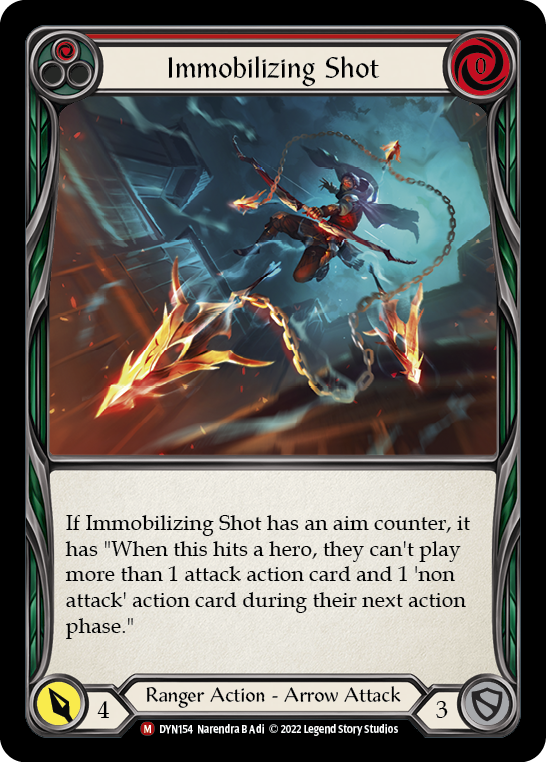
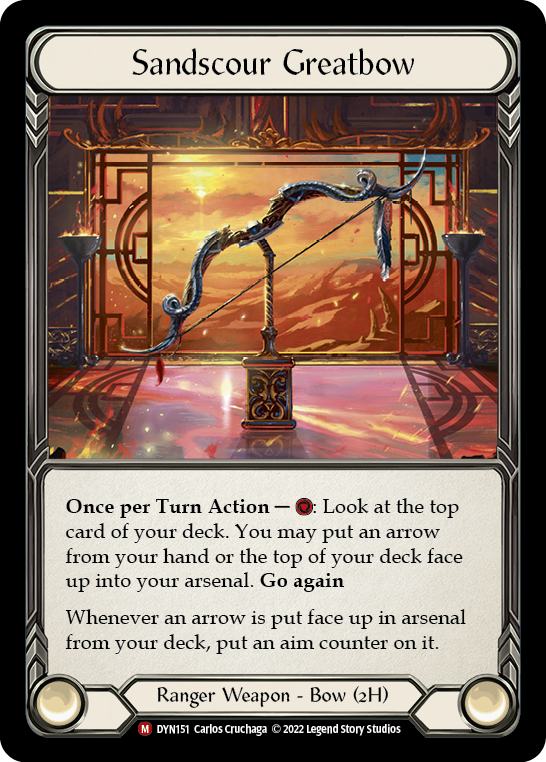
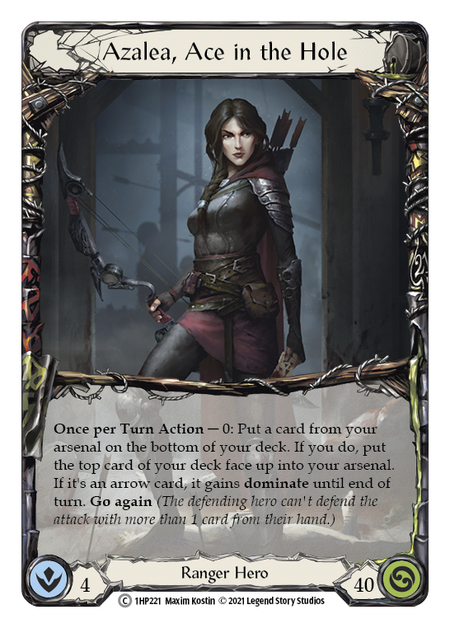
This is the task we're set to every time we deckbuild for an effect-driven hero - and once you've learned to ask yourself that question, you'll unlock a much wider card pool.
Take the arrow above: Immobilizing Shot. By itself, Immobilizing Shot is a 0-for-4 card - which, value rules tell us, is on rate for an attack, but exceedingly bland without anything else. That's Wounding Blow, and every hero in the game has had access to that card since Welcome to Rathe. If we were pursuing a value strategy, Immobilizing Shot - loaded via Red Liner for peak card efficiency - would not be the play.
Instead, Immobilizing Shot's value is in its effect - that, when you hit with it, your opponent's plays are limited to one attack and one non-attack card. To gain that effect, the arrow needs an aim counter - which, at its cheapest, comes passively when Sandscour Greatbow loads the arrow from the top of your deck. The cost to attack with an active Immobilizing Shot is now 1 resource, and we're still only dealing 4; a value proposition is now completely off the table. But what do we get in return?
If we're hitting Bravo with Immobilizing Shot, the answer is probably, "nothing". If we're hitting Zen, on the other hand, we've probably cut 3-5 attacks out of their turn. And regardless of the opponent, if they drop a defense reaction in response and Immobilizing Shot doesn't hit? We've added to what could become a cycle of our poor value getting covered by their strong value, ad nauseam, until we've decked ourselves.
How do we compensate for this? With dominate, to ensure the on-hit lands; with buffs, to climb over simple, single-card defenses; with a lower pitch curve, to spread decent value across all our cards while our opponents divide their cards between high-value attacks and the high-pitch cards required to pay for them.
Value is always value. But effects need to be capitalized on.
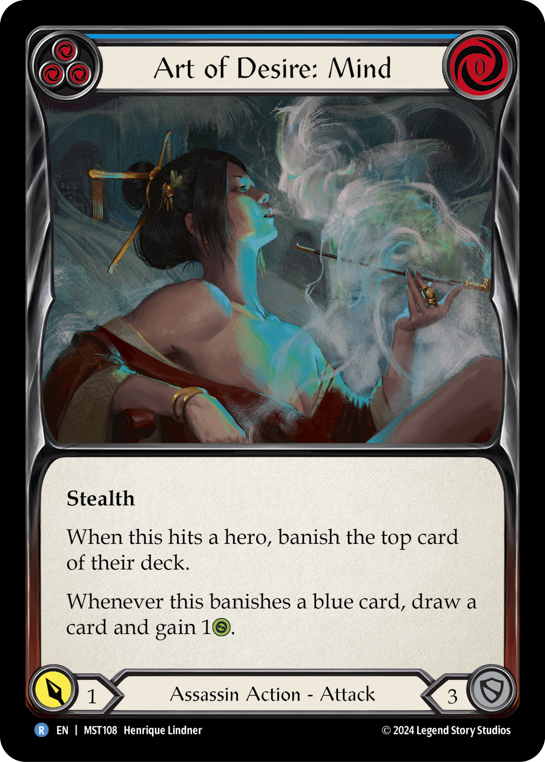
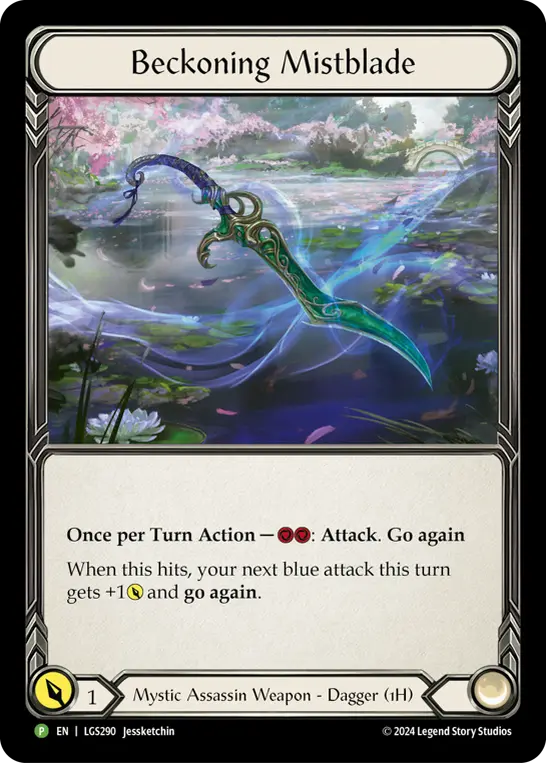

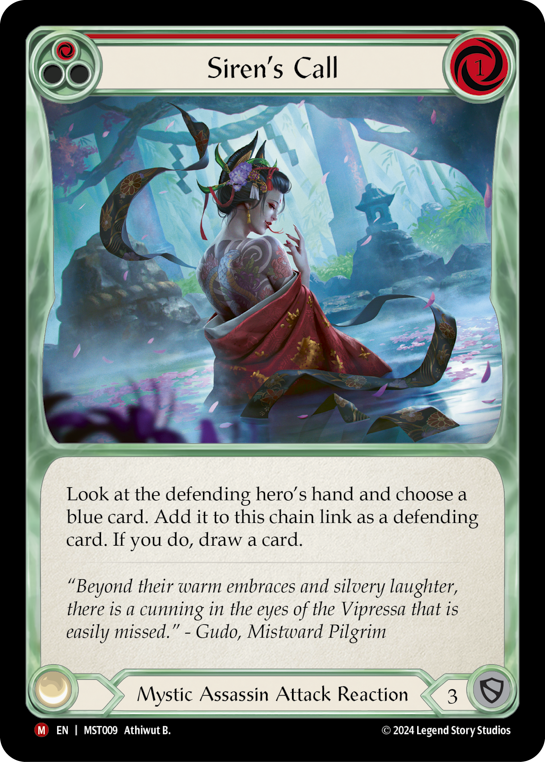
Nuu takes this concept to an extreme, providing a clear illustration of the way effects can compensate for numerical value. The cards above represent 3 resources spent to threaten 2 damage - a terrible rate. So where does the advantage come from? Let's run through some hypothetical block-outs to see.
1. The opponent doesn't block. Mistblade deals 1, then Art of Desire: Mind deals 2, banishes the top card of their deck (it's not blue), we float 1 resource as we arsenal Siren's Call and move to end.
3 damage, 1 card used, 1 opposing card taken (from deck), +1 card to next turn.
2. The opponent doesn't block. Mistblade deals 1, then Art of Desire: Mind comes in for 2 - but we play Siren's Call, find a blue in their hand, and add it to block, drawing a card and gaining 1 life.
1 damage, 1 life gained, 2 cards used, 1 opposing card taken (from hand), +1 card to next turn.
3. The opponent blocks the Mistblade. We play Siren's Call, find a blue in their hand, and add it to block, drawing a card. Then Art of Desire: Mind comes in for 1; they don't block it, and banish a card (it's not a blue).
1 damage, 2 cards used, 3 opposing cards taken (from hand and from deck).
4. The opponent blocks the Art of Desire: Mind. Mistblade deals 1, then Art of Desire: Mind comes in for 2, but they block. We play Siren's Call, find a blue, and add it to block. We draw 2 cards, gain 1 life, and if we drew into a playable card, continue with our turn...
1 damage, 1 life gained, 2 cards used, 2 opposing cards taken (from hand), +2 cards, turn continues...
5. The opponent blocks everything. We play Siren's Call on the Mistblade, pulling a blue from hand and drawing a card.
0 damage, 0 life gained, 2 cards used, 3 opposing cards taken (from hand and from deck), +1 card to next turn.
Those 5 options above don't even cover all the possible outcomes of this exchange - what if that top card banished by Art of Desire is blue? - and already it's apparent that the decisions made during Nuu's attack sequences are of immense consequence. What's more, it's not entirely clear which outcome is the most advantageous - though we can say with some certainty that the first outcome, while dealing the most damage, is likely the worst. In the first scenario, we spend 3 resources (1 card pitched) to deal 3 damage (a rate below the 0-for-4 baseline, and far below the 3-for-7), and both decks have now decreased by 1 card.
In all of the other scenarios, where we take 1-2 cards from the opponent's hand, Nuu is gaining the equivalent of 3-4 value for each card taken from the opponent - but (and this is a significant 'but') only if that card's absence is felt at some point in the game. In scenario 2, Nuu's playline has a value of 5+ if the blue we take would have converted to 3+ damage on the opponent's next turn. The standard for counting 'cards from deck' as value gained is even higher: the opponent must reach the 2nd cycle and find that the absence of those cards is relevant (either because they were key cards that the deck's gameplan relies on to win, or because they simply run out of cards). The value of cards taken from the deck is delayed value - and as Nuu invests more and more into those delayed payoffs, she slides further and further behind in the value exchanges of combat.
When Nuu takes cards from the opponent, she is gaining the equivalent of 3-4 value for each card taken - but only if that card's absence is felt at some point in the game.
What I'm getting at here is the importance of viewing cards with effects as part of packages. While it may feel flashy to banish a bunch of cards from the top of their deck with Eradicate, it only really means something if the deck, as a whole, is built to realize that potential. Intimate Inducement is a niche card with a very cool effect - you can go looking for a blue among the top cards of your opponent's deck and stick it to the combat chain as a 0-defense block - that has no place in a standard Nuu build; but if your deck is built to take advantage of hand knowledge while also capable of surviving to the point where your opponent's missing cards make their absence felt, you can gain a ton of value from it.
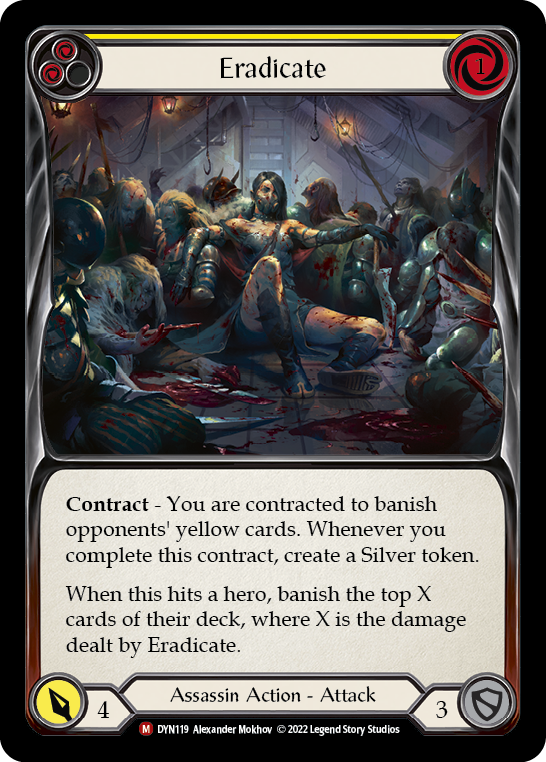
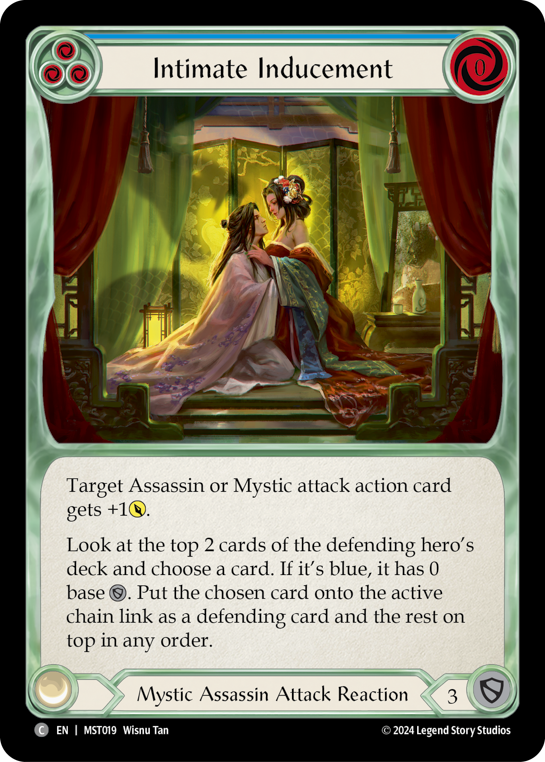

Conversely, Just a Nick is often thought of as an unqualified "good stuff" card - but in fact, it also requires a package built around it. To run Just a Nick with any kind of consistency, you need to forego damage-dealing versions of Assassin attacks in favor of pitch-ready 0-for-1s. Most popular Nuu decks incorporate this package.
The best decklists are those where packages support one another; the bare minimum for a competent list is that the packages don't conflict. Without understanding of the packages within a decklist, you might not get the value out of the cards you're using. Imagine you pick up a Pro Quest-winning Nuu list and set about making swaps. Art of Desire: Mind isn't hitting blues often in this aggro meta, so you swap to red; and Infect feels weak, so you swap it out for Eradicate. Suddenly, Just a Nick - that card the online community swears by - just feels clunky, and you swear it's overrated. But in fact, you've lost sight of the package that Just a Nick is a part of, from which its power is derived.
It may sound absurd to think someone could overlook that, but in many cases this is exactly what's happening with marginalized cards. Circling back to a prior example, Intimate Inducement is largely written off as a bad card - but as part of a larger package, it plays an important role and can even claim to be a key card.
In many cases of marginalized cards, the package its meant to be a part of is being overlooked.
This is an important lesson if you, like me, have... janky inclinations. If you relate to the meme below, take note.
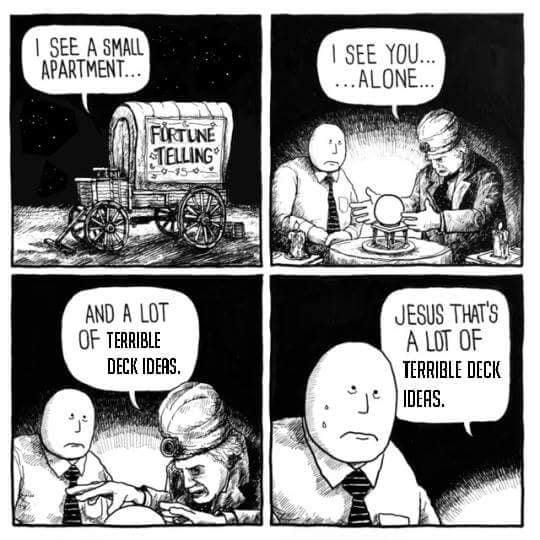
When you find yourself infatuated with an off-meta card, you'd do well to start by asking, "What does this card want from me?" Because if you could just drop the card in a list and it would perform, people would be doing that. Odds are, you're looking at a card that's meant to be part of a package, and if you want to coax the full value out of it you need to identify the other cards that will make it shine.
Take my Nitro Mechanoid build for Dash i/o. Nitro Mechanoid has been a fixation for me since its debut; and while Maxx Nitro is a more organic fit, I personally felt drawn to Dash i/o not only as a character but for the mechanic of playing Hyper Drivers off the top of the deck. Because Hyper Drivers lack Crank without Maxx, they aren't easy 1-to-1 swaps for the items typically run in an aggressive Dash i/o deck like Mara Faris'. While it's hard not to consider the Mechanoid as part of a package, it's easy to focus only on the smallest portion of it: the required assembly needed to Construct Nitro Mechanoid. But stopping there would lead you to the conclusion that Nitro Mechanoid is a bad card. You can't stop there. You need to identify what the card requires to support it. You need to consider the whole package.
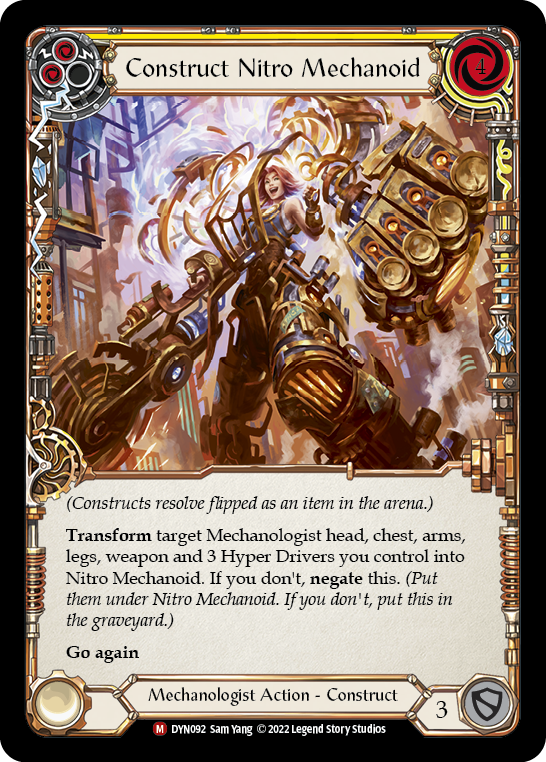
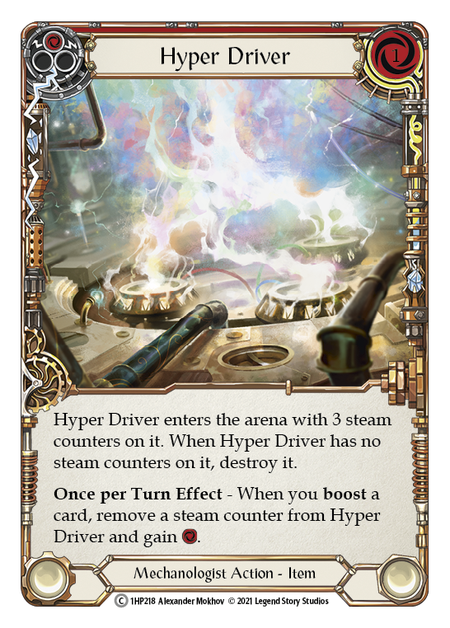
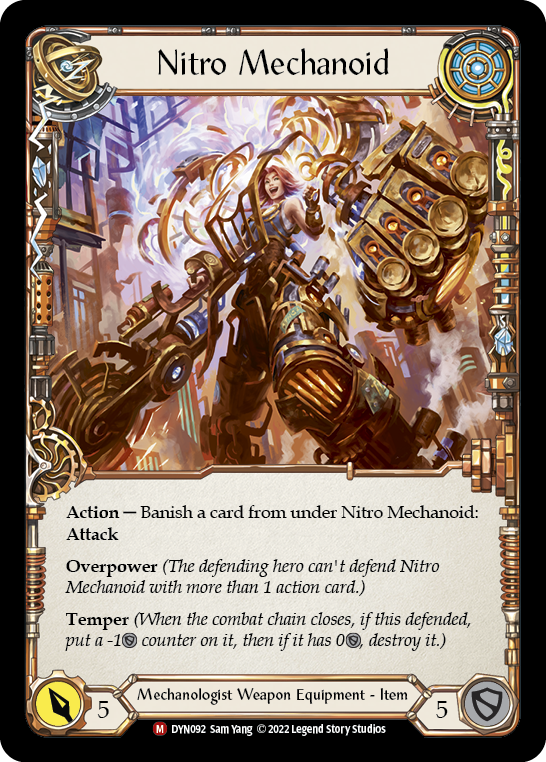
That means giving preference to cards that search the deck - opt, for example, or literal search cards like Spark of Genius. It means focusing more on your blocking, with items like Mini Forcefield and Dissolving Shield. It means cutting a turn of boosting short when the card you're digging for makes it to the top (boosting can serve both aggression and deck searching; the Mechanoid asks you to prioritize the latter). Like Nuu, a Mechanoid Dash is investing in delayed value; and you need to survive long enough to realize all the investments you've made earlier in the game.
This is the task of deckbuilding: to identify what a card needs from you, and to assess whether your deck can provide that. If it can't, can you reshape the deck to address those needs? And if you do, can the deck succeed? Or have you bent too far? Are the various packages within the deck in harmony, or are they constantly competing with each other?
When you've passed judgment on a card, have you considered it within the wider scope of everything you 'could' do with it? Or simply within the confines of 'what I'm doing now'?




